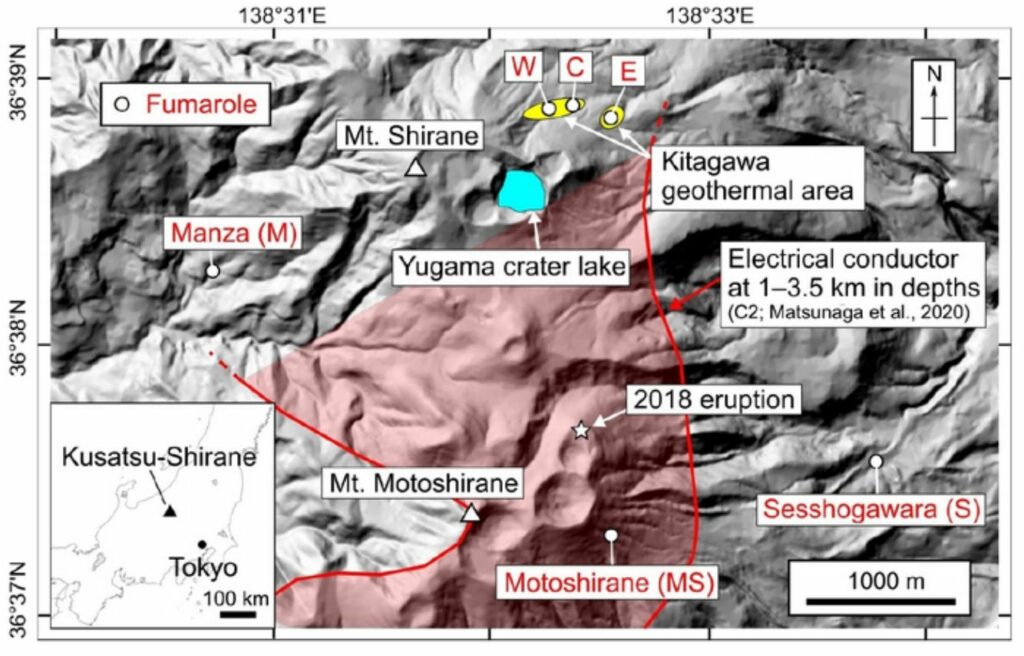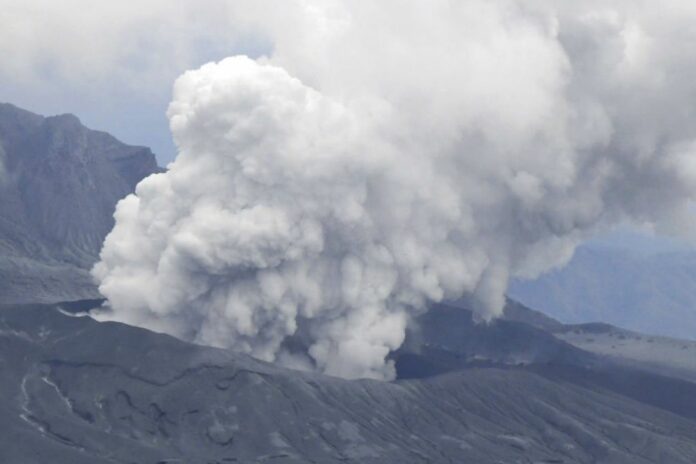Do you get excited or scared when you think about standing on a volcano? Living in the shadow of a volcano is a way of life for many people. Japan has 111 active volcanoes, with 15 volcanic “events,” including eruptions, occurring annually on average. But these occurrences can be fatal and are infamously hard to forecast.
In 2014, Mount Ontake, the second-highest volcano in Japan and a popular tourist destination, tragically erupted, killing 58 people and leaving five others unaccounted for. Earthquake activity is usually an early warning sign, but some eruptions, like the one at Ontake, can happen without clear earthquake signals.
This means that disaster-prevention groups, like the Japan Meteorological Agency, would benefit from having other reliable ways to warn people about the next potential disaster.
A team from the University of Tokyo discovered that the ratio of atoms in specific gases created by volcanic fumaroles (gaps in the Earth’s surface) can signal what is happening to the magma deep below, similar to receiving a blood test to examine your health. This may be an indication that things are “heating up.”
Changes in the ratio of argon-40 to helium-3, in particular, can reveal how frothy the magma is, which signals the possibility of various eruption types.
Fumaroles are openings and cracks in the crust of the Earth that let out gas and steam. They are usually found near volcanoes. The emitted gas is a mixture of substances. Its make-up can tell us about what is going on in the Earth’s mantle, which is below the crust. This is where magma (molten rock) forms and rises, eventually erupting as lava. It is previously known by scientists that the ratio of some gases’ isotopes—atoms from an element with the same chemical properties but a different mass—can reveal the presence of subterranean magma activity.

“We knew that the helium isotope ratio occasionally changes from a low value, similar to the helium found in the Earth’s crust, to a high value, like that in the Earth’s mantle, when the activity of magma increases,” explains Professor Hirochika Sumino, adding, “this was based on an observation of the helium isotope ratio of cold spring gas in El Hierro Island, in the Canary Islands (in the Atlantic Ocean off the northwestern coast of Africa), where an eruption occurred in 2011.”
It is previously known by scientists that the ratio of some gases’ isotopes—atoms from an element with the same chemical properties but a different mass—can reveal the presence of subterranean magma activity.
Sumino and his team chose to monitor the gases coming from six fumaroles near the active Kusatsu-Shirane volcano in Gunma Prefecture, which is located about 150 kilometers northwest of Tokyo, in order to learn more. The researchers took samples from 2014 to 2021 at intervals of a few months. After collecting the samples, they returned to the lab and used cutting-edge machinery called a noble gas mass spectrometer to evaluate them. This allowed them to accurately measure the amounts of isotopes, even those that are very small but important, like helium-3, which is usually more common in the mantle than in the crust or the air.
“We succeeded in detecting changes in the magma-derived argon-40/helium-3 ratio, related to magmatic unrest,” adds Sumino.
And with the help of computer models, they “revealed that the ratio reflects how much the magma underground is foaming, making bubbles of volcanic gases which separate from the liquid magma.”
“How much magma foams controls how much magmatic gas is provided to the hydrothermal system beneath a volcano and how buoyant the magma is. The former is related to a risk of phreatic eruption, in which an increase in water pressure in the hydrothermal system causes the eruption. The latter would increase the rate of magma ascent, resulting in a magmatic eruption.
“When you compare a volcano with a human body, the conventional geophysical methods represented by observations of earthquakes and crustal deformation are similar to listening to the chest and taking body size measurements. In these cases, it is difficult to know what health problem causes some noise in your chest or a sudden increase in your weight, without a detailed medical check. On the other hand, analyzing the chemical and isotope composition of elements in fumarolic gases is like a breath or blood test. This means we are looking at actual material directly derived from magma to know precisely what is going on with the magma.”
For the time being, collecting gas samples in the field and transporting them back to the lab for analysis is a difficult and time-consuming operation. However, Sumino has experience with noble gas mass spectrometers and plans to create a new tool that will allow them to conduct the same analysis in the field while operating in real time.
“Now we are developing a portable mass spectrometer for on-site, real-time monitoring of noble gas isotope ratios from fumarolic gases,” highlights the author.
“Our next step is to establish a noble gas analysis protocol with this new instrument, to make it a reality that all active volcanoes — at least those which have the potential to cause disaster to local residents — are monitored 24 hours a day, seven days a week.”
Source: 10.1038/s41598-022-22280-3
Image Credit: Kyodo News via Getty Images
